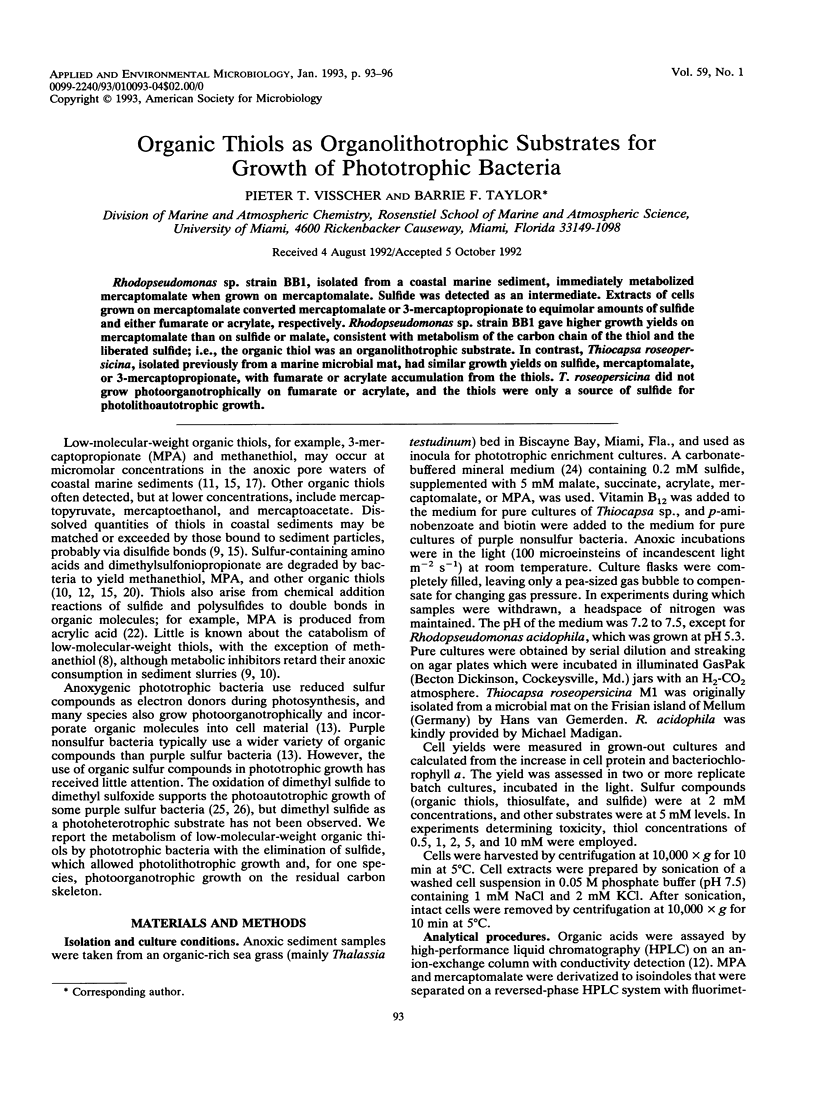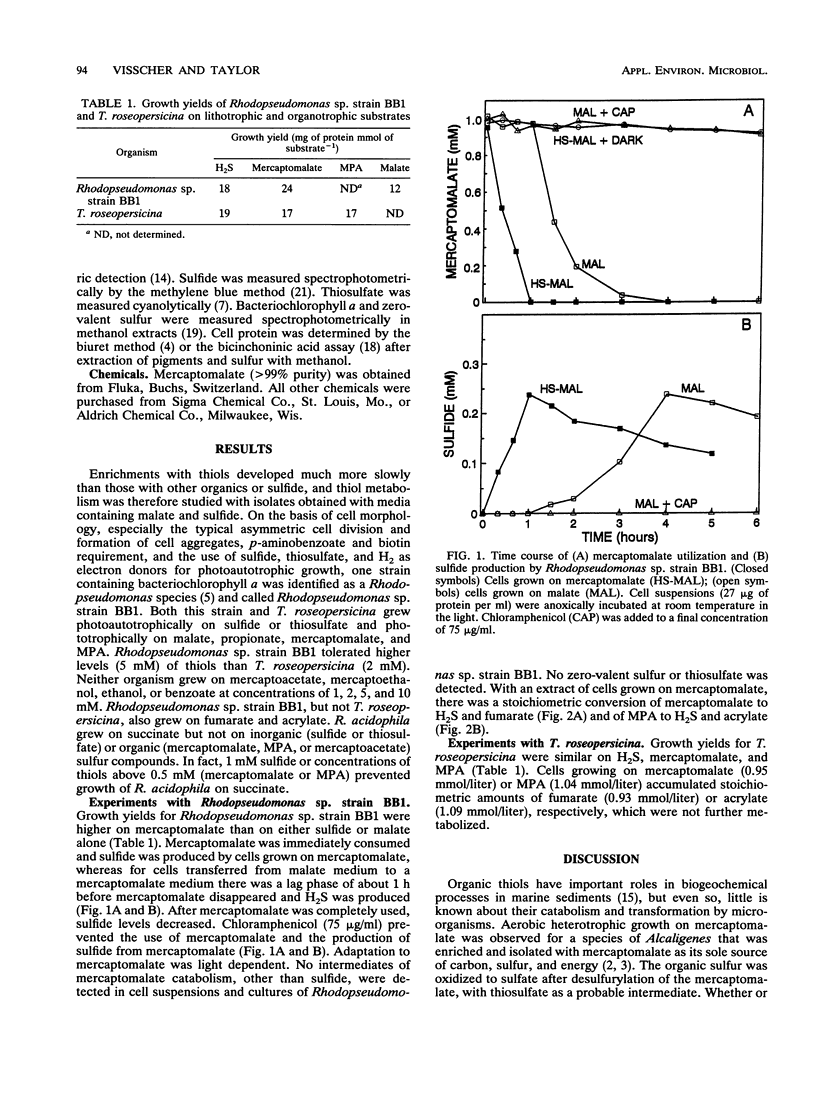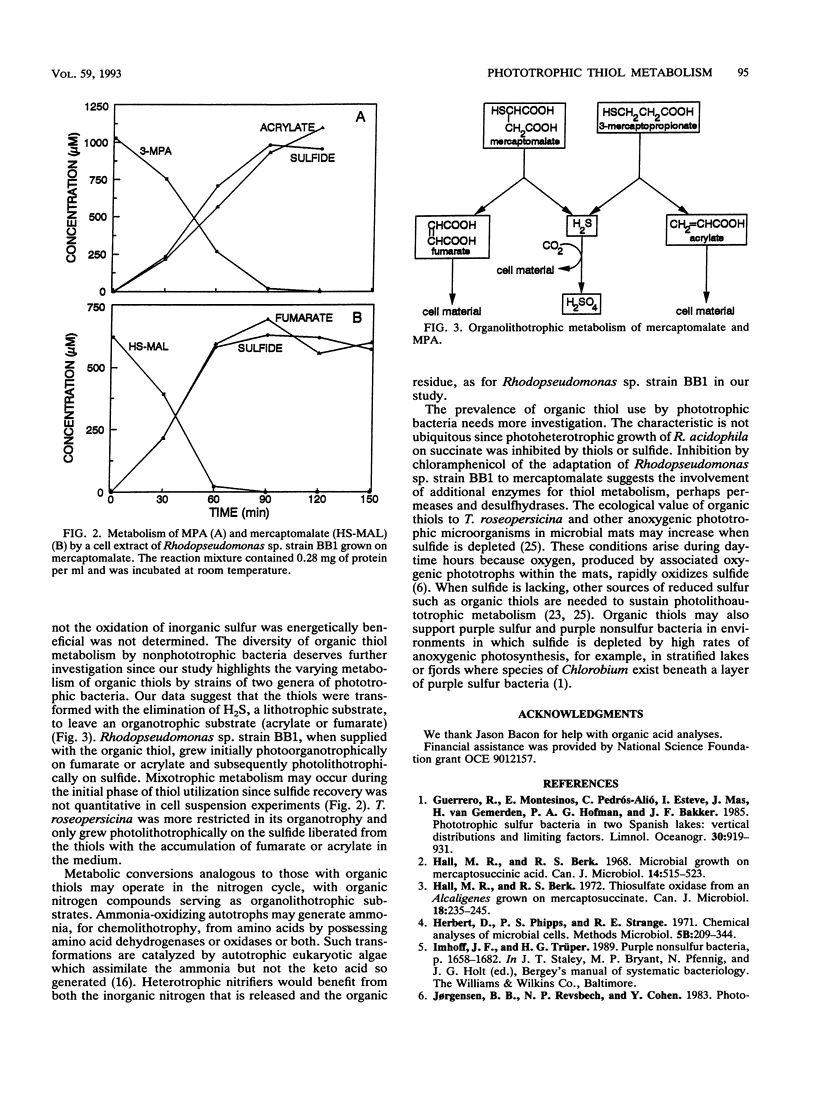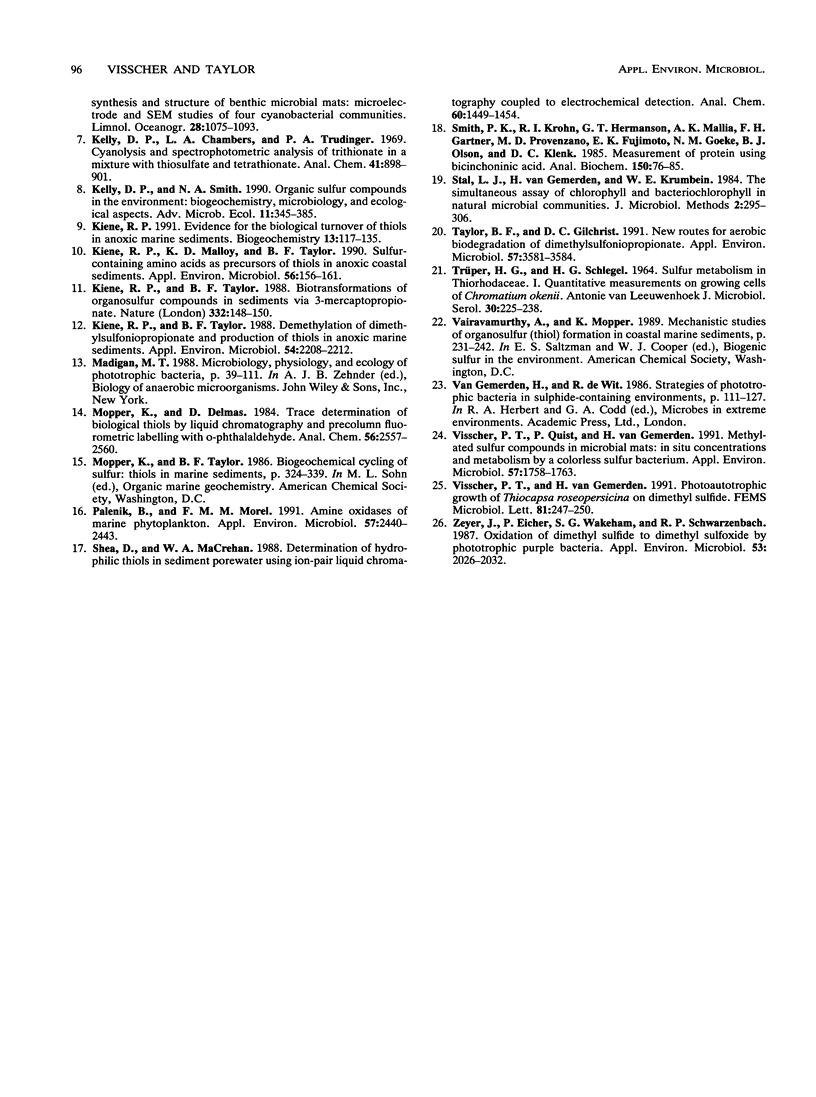Abstract
Rhodopseudomonas sp. strain BB1, isolated from a coastal marine sediment, immediately metabolized mercaptomalate when grown on mercaptomalate. Sulfide was detected as an intermediate. Extracts of cells grown on mercaptomalate converted mercaptomalate or 3-mercaptopropionate to equimolar amounts of sulfide and either fumarate or acrylate, respectively. Rhodopseudomonas sp. strain BB1 gave higher growth yields on mercaptomalate than on sulfide or malate, consistent with metabolism of the carbon chain of the thiol and the liberated sulfide; i.e., the organic thiol was an organolithotrophic substrate. In contrast, Thiocapsa roseopersicina, isolated previously from a marine microbial mat, had similar growth yields on sulfide, mercaptomalate, or 3-mercaptopropionate, with fumarate or acrylate accumulation from the thiols. T. roseopersicina did not grow photoorganotrophically on fumarate or acrylate, and the thiols were only a source of sulfide for photolithoautotrophic growth.
Full text
PDF



Selected References
These references are in PubMed. This may not be the complete list of references from this article.
- Hall M. R., Berk R. S. Thiosulfate oxidase from an Alcaligenes grown on mercaptosuccinate. Can J Microbiol. 1972 Feb;18(2):235–245. doi: 10.1139/m72-036. [DOI] [PubMed] [Google Scholar]
- Kiene R. P., Malloy K. D., Taylor B. F. Sulfur-containing amino acids as precursors of thiols in anoxic coastal sediments. Appl Environ Microbiol. 1990 Jan;56(1):156–161. doi: 10.1128/aem.56.1.156-161.1990. [DOI] [PMC free article] [PubMed] [Google Scholar]
- Kiene R. P., Taylor B. F. Demethylation of dimethylsulfoniopropionate and production of thiols in anoxic marine sediments. Appl Environ Microbiol. 1988 Sep;54(9):2208–2212. doi: 10.1128/aem.54.9.2208-2212.1988. [DOI] [PMC free article] [PubMed] [Google Scholar]
- Mopper K., Delmas D. Trace determination of biological thiols by liquid chromatography and precolumn fluorometric labeling with o-phthaladehyde. Anal Chem. 1984 Nov;56(13):2557–2560. doi: 10.1021/ac00277a064. [DOI] [PubMed] [Google Scholar]
- Palenik B., Morel F. M. Amine oxidases of marine phytoplankton. Appl Environ Microbiol. 1991 Aug;57(8):2440–2443. doi: 10.1128/aem.57.8.2440-2443.1991. [DOI] [PMC free article] [PubMed] [Google Scholar]
- Smith P. K., Krohn R. I., Hermanson G. T., Mallia A. K., Gartner F. H., Provenzano M. D., Fujimoto E. K., Goeke N. M., Olson B. J., Klenk D. C. Measurement of protein using bicinchoninic acid. Anal Biochem. 1985 Oct;150(1):76–85. doi: 10.1016/0003-2697(85)90442-7. [DOI] [PubMed] [Google Scholar]
- TRUEPER H. G., SCHLEGEL H. G. SULPHUR METABOLISM IN THIORHODACEAE. I. QUANTITATIVE MEASUREMENTS ON GROWING CELLS OF CHROMATIUM OKENII. Antonie Van Leeuwenhoek. 1964;30:225–238. doi: 10.1007/BF02046728. [DOI] [PubMed] [Google Scholar]
- Taylor B. F., Gilchrist D. C. New routes for aerobic biodegradation of dimethylsulfoniopropionate. Appl Environ Microbiol. 1991 Dec;57(12):3581–3584. doi: 10.1128/aem.57.12.3581-3584.1991. [DOI] [PMC free article] [PubMed] [Google Scholar]
- Visscher P. T., Quist P., van Gemerden H. Methylated sulfur compounds in microbial mats: in situ concentrations and metabolism by a colorless sulfur bacterium. Appl Environ Microbiol. 1991 Jun;57(6):1758–1763. doi: 10.1128/aem.57.6.1758-1763.1991. [DOI] [PMC free article] [PubMed] [Google Scholar]
- Zeyer J., Eicher P., Wakeham S. G., Schwarzenbach R. P. Oxidation of dimethyl sulfide to dimethyl sulfoxide by phototrophic purple bacteria. Appl Environ Microbiol. 1987 Sep;53(9):2026–2032. doi: 10.1128/aem.53.9.2026-2032.1987. [DOI] [PMC free article] [PubMed] [Google Scholar]


